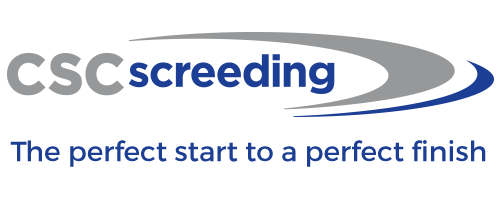
How do you reduce project timescales and still get a good-quality screed?
 Construction timescales are dependent on the size and complexity of the project, ambient weather conditions, and the location where the new building will be constructed. But an important aspect most builders overlook is that the screed alternatives they use can help complete projects not only easier, but also quicker.
Construction timescales are dependent on the size and complexity of the project, ambient weather conditions, and the location where the new building will be constructed. But an important aspect most builders overlook is that the screed alternatives they use can help complete projects not only easier, but also quicker.
Fast-Drying Screeds
Fast-drying screeds contain admixtures, which reduce the water/cement ratios. Whilst traditional screeds require 110 days to dry out completely, fast-drying screeds can take as little as 3 days, so you can easily understand the importance of using fast-drying screeds in projects with tight deadlines. Besides faster drying times, high-quality fast-drying screeds, such as FlexiDry, deliver:
- superior compressive strength, being able to take on light-foot traffic as early as 12 hours compared to 24 to 48 hours for traditional or flowing screeds;
- greater compaction around UFH pipes, enhancing thermal conductivity in under-floor heating (UFH);
- greater control over the drying process, allowing screeders to use large bays;
- a lower carbon footprint; fast-drying screed mixtures reduce the thickness of screed and the amount of cement used.
An added advantage of fast-drying screeds is that they can reduce costs and material storage requirements as well as timelines. Not only will you have to purchase, transport, and store smaller quantities of screed, but you will also reduce the amount of waste. Additionally, fast-drying mixtures include special additives, which confer screeds greater resistance to abrasion and water repellent properties, and make them compatible with latex-based products.
Free-Flowing Anhydrite Screeds
Free-flowing anhydrite screeds are gypsum- or calcium sulphate-based screeds mixed with special aggregates and additives to facilitate screed installation at much reduced depths compared to traditional screeds.
These screeds deliver a smooth surface, which makes them appropriate for any domestic and commercial projects. Since the free-flowing anhydrite screeds produced in factories have a pumpable consistency, they can be transported with screed mixing lorries and poured directly over the entire area that needs to be screeded. The free-flowing screeds delivered in bags can be mixed with a suitable worm pump or hand whisk after water is added.
Free-flowing screeds come with a series of advantages, such as:
- high compressive and flexural strength, ranging from 25 to 30 Nm; no reinforcement is required;
- rapid rate of application; with free-flowing screeds, screeding contractors are able to cover large areas up to 1500sq.m per day;
- low shrinkage rate, which allows screeders to install free-flowing screeds in large areas without using stress relief joints;
- SR2-class tolerance, with deviations from datum levels of up to 5mm in 2m length;
- varying application thickness, ranging from 30mm for unbonded screeds, to 35mm for floating domestic screeds to 40mm for floating commercial screeds.
- the minimum coverage over 16 mm UHF pipes is 25mm from the top of the pipe, allowing 41mm as a minimum overall depth
Thanks to the minimal thermal expansion (0.012mm/mK) of free-flowing screeds, they can be force dried starting seven days after the installation. This characteristic combined with a good thermal conductivity (2.5W/mK) makes them ideal for UFH.
Unfortunately, free-flowing anhydrite screeds come with a few drawbacks: they are non-compatible with cementious adhesives, cannot be installed in wet areas, and require additional sanding and priming before the floor finish to be applied. Additionally, they have longer drying times (1mm per day up to 40mm and 0.5mm thereafter) compared to some fast-drying screeds (drying times of just 3 days).
Which ever screed you opt for you should think about the schedule of work and timelines. For example in a large area if the project timelines allow you to schedule each trade sequentially, then freeflowing screeds might be the answer. However if many trades need access to the area in a short period of time then a site mixed fast drying screed might be more appropriate for your project. Expert advice and paying attention to the details are key in the screeding stage of your build.
By subcontracting your screeding projects to BuilderScreed, you will take advantage of competitive quotations, boost overall productivity and performance, benefit from sustainable practices, and complete your projects on time and within budget, which translates into increased revenues and profit margins for you. Contact us at BuilderScreed, and our professional screeders will be there to help you.
